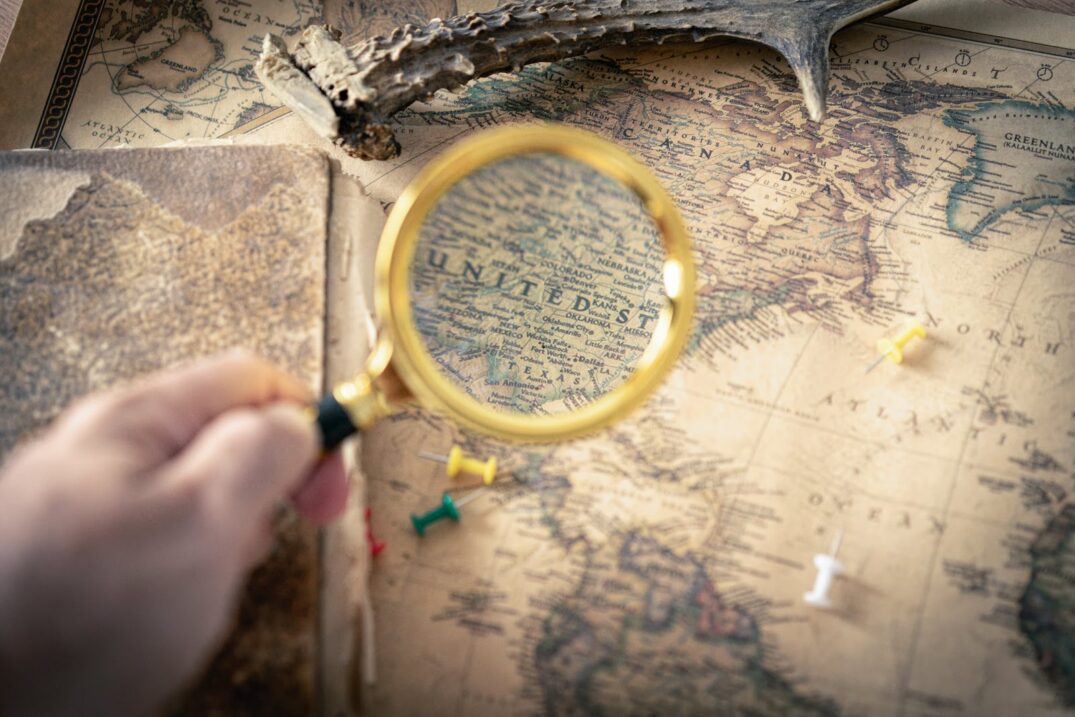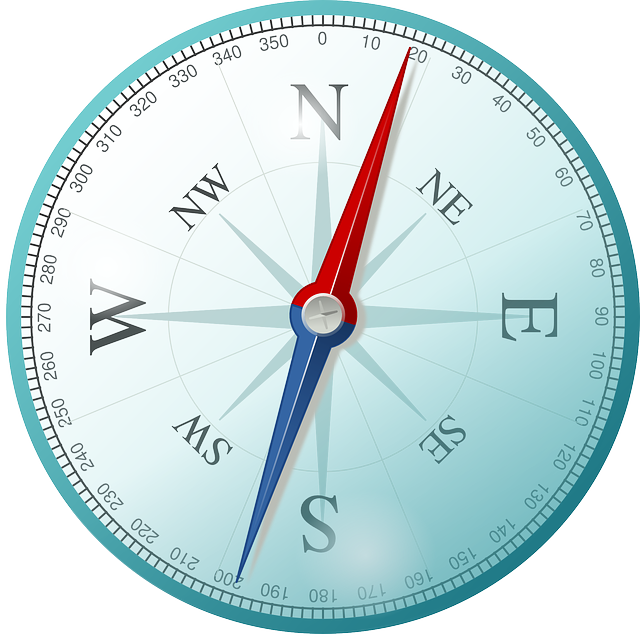Maps, those intricate guides to the world around us, hold an unparalleled ability to simplify our lives. Whether it’s navigating the streets of a town or pinpointing a store within a bustling mall, maps unravel the complexities of the physical realm. Yet, crafting a map is no small feat. It demands meticulous measurements, intricate lines, and unwavering precision. Thus, the art of map-making emerges as an intricate practice, entwining both creation and exploration.
Embarking on the Journey of Cartography
Enter cartography, a realm where science and art converge to create visual masterpieces of geographic data. Within its embrace lies the gathering, analysis, and interpretation of spatial information, serving as our compass through the vast expanse of our world.
A Glimpse into Cartographic History
Charting Through Time and Cultures
The pages of history unfurl before us, unveiling a captivating voyage across eras and civilizations. From the clay tablets of ancient Babylon to the realm of contemporary satellite imagery, maps have been our steadfast companions. In this narrative, we delve into the enchanting tapestry of cartography’s history, tracing its evolution, innovations, and indelible impact on humanity.
Centuries fade into antiquity, and our journey leads us to the dawn of cartography. As early humans ventured forth, they etched maps into existence, a bridge between spatial landscapes and shared understanding. Notable amongst these chronicles, the Babylonian world map from the 6th century BCE and the visionary cartography of Greek sage Anaximander.
An era of exploration emerges, and cartography assumes a pivotal role in expanding our world’s horizons. Visionaries like Christopher Columbus and Ferdinand Magellan set sail, charting their courses with the aid of maps. Meanwhile, cartographers such as Gerardus Mercator rewrite the narrative through groundbreaking map projections.
The Modern Cartographer
Modernity casts its influence, ushering in an era where technology stands as cartography’s faithful ally. Computer prowess and satellite advancements bring forth a new age, where maps dance with precision and interactivity. Geographic Information Systems (GIS), satellite vistas, and digital tools unite, painting intricate portraits of our spatial realm.
Within the confines of geography, cartography assumes a dual identity: creator and scholar. A symbiotic dance between history’s echoes and the birth of new landscapes ensues. This harmony births the modern cartographer, whose canvas spans from archaic parchment to aerial and satellite photographs.
The Craftsmanship of Cartography
The symphony of cartography echoes through four harmonious processes:
- Data Collection: Gathering geographic threads, weaving them into a tapestry of knowledge;
- Data Analysis: A dance of patterns and relationships, unveiling the secrets that terrain conceals;
- Design: An artist’s touch, painting symbols and text to guide the seeker’s eye;
- Production: The grand finale, presenting the map in forms tangible and digital, a gateway to exploration.
To wield this mastery, the cartographer must waltz through a symphony of techniques—Geodesy, Surveying, Photogrammetry, Remote Sensing, and the realm of GIS.
The Foundations Explored
Embark on a voyage into the heart of cartography’s foundational elements. These pillars—title, legend, scale, and compass rose—compose a harmonious symphony. Understanding their roles crafts maps that speak volumes, guiding the curious soul on a journey of discovery.
The Language of Coordinate Systems
Latitude and longitude unfurl as the secret codes of Earth’s canvas. Herein lies the power to pinpoint, to navigate with unwavering accuracy—a language every cartographer must master.
Map projections, the alchemy that renders Earth’s curves onto flat parchment. Each a distinct equation, a blend of advantages and distortions. The choice of projection, a compass guiding the cartographer to accurate portrayals

A Palette of Cartographic Techniques
In the world of maps, diversity reigns supreme. Unique techniques dance across landscapes, crafting distinct narratives for every map. From the isopleth method to the chorochromatic dance of colors, each technique whispers tales of places and spaces.
ISOPLETH METHOD: Mapping the Terrain
The canvas of maps comes alive with the intricate dance of the Isopleth method, where data finds expression in lines of varied esteem. In the realm of geography, these lines interlink places of equal value in distribution, forming an Isopleth. Drawing its name from the Greek ‘ISOS’ meaning “same,” and ‘Plethron’ meaning “measure,” the Isopleth charts a course of equivalence. Rainfall’s embrace takes the form of an isopleth, baptizing it an ISOHYET. So too, an isopleth unites the equals in temperature, emerging as an Isotherm. In this tapestry, Isobars whisper the secrets of pressure, Isobaths the tales of depth, and Isohalines the chronicles of salinity.
With measured grace, the Isopleth weaves through coordinates, each interval carefully chosen, a symphony of precision. Each line stands distinct, a journey through consistent values or a harmonious interpolation. As shades caress the spaces between, they mirror the crescendo of values, becoming a chiaroscuro of information. Yet, let it be known, these shades dance not to the rhythm of density, a tale separate from Choropleths. Drawing near, the Isopleths tell of swift transitions; widening apart, they paint a tale of gradual change.
CHOROPLETH METHOD: A Symphony of Shades
The cartographic stage welcomes the Choropleth method, a symphony of hues, unveiling variations in the embrace of geographic or administrative realms. Shades intertwine, a visual tapestry that weaves the story of low, medium, and high values across landscapes. Demographics unfold—a dance of density, age, and literacy. Agriculture whispers its tale, from crops to intensities, while cartographic shades measure the ebb and flow of density. Light emerges for the low, and darkness cloaks the high, a dance of contrasts harmoniously orchestrated.
CHOROSCHEMATIC METHOD: The Artistry of Symbols
Enter the realm of Choroschematic artistry, where maps transcend into symbols. Here, soil, vegetation, and land use become intricate patterns, a dance of dots, circles, and initials. Each symbol a chapter, a location-focused tale that transcends dimension. Shape and color bow to location, a canvas where each symbol is a brushstroke of geography. An atlas of elements, woven together in a symphony of location.
DOT METHOD: Tracing Patterns with Dots
On the map’s canvas, dots materialize, each a herald of presence. Dot maps, a dance of scatter, unveil spatial patterns, where clusters breathe life into concentrations. From their midst, emerges a symphony of data, speaking volumes through scattered constellations.
DIAGRAMMATIC METHOD: Unveiling Through Diagrams
A tale unfolds, etched through diagrams on the map’s embrace. The landscape speaks through diagrams, reflecting events, and summarizing values within territorial bounds. Pastures, plough-lands, and forests tell their stories, each district a note in the cartographic symphony. Districts unite, and a modern cartographer’s song is sung.
Cartography Tools and Software: Unleashing Creativity
A cartographer’s canvas flourishes as a captivating blend of traditional tools and modern software. Across the expanse of their workspace, the tactile companionship of compasses, pencils, and rulers dances harmoniously with the virtual prowess of ArcGIS, QGIS, and Illustrator. In a world where the past and the future entwine, hand-drawn dreams are lovingly nurtured alongside digital masterpieces, both contributing to the intricate tapestry of the cartographer’s tale.
- The meticulous strokes of a pencil on parchment reveal the cartographer’s artistic touch, breathing life into every contour and coastline. With each deliberate line, an ancient connection to the craft is maintained, paying homage to a time when maps were meticulously created by human hands. Yet, in this same creative space, the glow of a computer screen illuminates the digital realm where geographic information systems seamlessly integrate data, giving rise to accurate and detailed visualizations;
- The cartographer’s narrative unfolds across this diverse landscape, weaving threads of history, geography, and technology. Their creations transcend mere maps; they become gateways to exploration, conduits of knowledge, and invitations to traverse the world’s wonders. As cartographers, they stand at the crossroads of tradition and innovation, forging ahead with a rich legacy while boldly embracing the tools of tomorrow.
The Essence of a Cartographer: A Maker of Maps
A cartographer is more than a creator of maps; they are the weaver of worlds, seamlessly blending the threads of science, artistry, and technology into a tapestry of exploration. Within their creative realm, data takes root and blooms, guided by their skilled hands as it flows from their fingertips, giving birth to maps that reverberate with the Earth’s very heartbeats.
- With each stroke of their pen or click of their mouse, the cartographer embarks on a journey through knowledge, navigating the vast oceans of information to distill it into a visual narrative. The lines and contours they craft become vessels of understanding, carrying us on voyages through space and time. Mountains rise, rivers wind, and cities sprawl under their skillful touch, each element telling a story of place and history;
- As guardians of geographic truth, the cartographer’s role extends beyond representation; they are curators of the world’s complexities, translating data into a language of landscapes. Through their art, they unveil hidden patterns, illuminate connections, and provide a window into the harmonious symphony that is our planet’s ecosystem.
In the hands of a cartographer, a map is not just a static image; it is a living embodiment of human exploration, a testament to the endless curiosity that propels us to chart the unknown. It is a testament to the enduring spirit of discovery that courses through the veins of humanity.
The Skillset of a Cartographer: Crafting with Precision
A cartographer’s skill set is a constellation of talents, a fusion of geographical intrigue, a discerning eye, and an artistic soul. Guided by an innate spatial awareness and a keen sense of color vision, they navigate the labyrinth of geographical data, deciphering its intricate symphony to bring forth captivating maps.
- With an almost intuitive understanding of space and place, the cartographer transforms abstract data points into visual narratives. Symbols and shades, akin to their alphabet, fill their canvas as they meticulously craft tales of landscapes, each stroke shaping a realm of mountains, valleys, and oceans;
- It’s through this masterful manipulation of symbols that they capture the essence of a place, allowing viewers to traverse its contours without ever leaving their seats.
The cartographer’s work is a harmonious blend of science and art, where data becomes a palette and the canvas stretches to embrace the world. They are translators of information, rendering complex datasets into accessible and enchanting forms. In their hands, maps cease to be mere tools for navigation; they evolve into windows to the world, gateways to exploration, and testimonials to the wondrous beauty that Mother Nature has woven across the Earth’s tapestry.
Conclusion
Cartography, an eternal companion, navigates our journey through time and space. From distant horizons to microscopic details, maps breathe life into understanding. As technology’s cadence advances, the cartographer’s song weaves the past and future, ever-present in the heart of human civilization.
